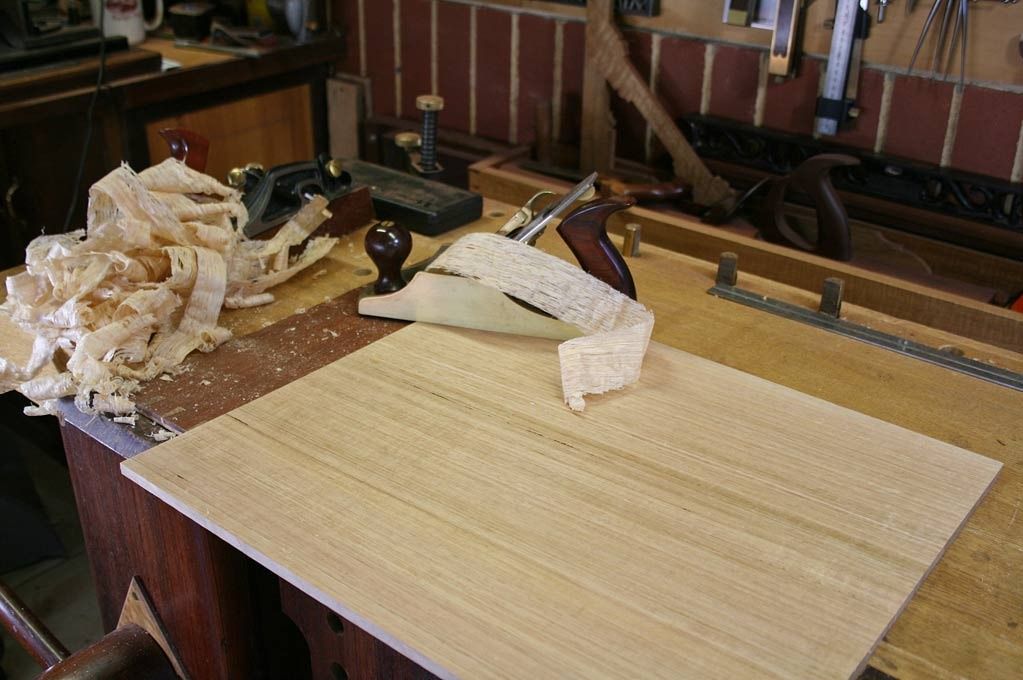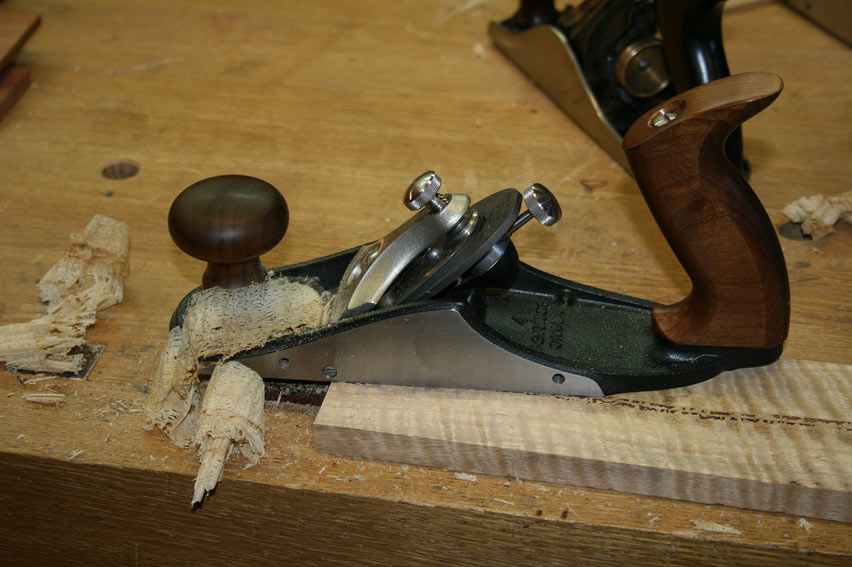IMO a tight mouth is the least effective way of controlling tear out. You're limited to extremely fine cuts or the plane chokes, any time the plane rides over even the slightest hollow it negates the tight mouth benefit, on many planes (not all but many) it's a faff to arrange a really tight mouth, it puts a premium on the precision of every other plane component (i.e. sole flatness, blade alignment, cap iron alignment).
From a practical perspective it's not that a tight mouth delivers zero benefit, but the benefit is small and may not be worth the effort. Interestingly Karl Holtey used to advise his customers against having the ultra fine mouth that they generally requested.
I disagree with DW about a 50 degree pitch. On some timbers that's all you need to prevent tear out, the problem is we're just not working with those timbers to the same extent that we used to. The type of good quality mahogany that's all but disappeared today is a case in point, it's a very mild working timber to begin with, but the occasional bit of ribbon grain can still cause problems which a 50 degree pitch seems to generally tame. Conversely some really awkward timbers might need more than 55 degrees to fully cure tear out. Before I was persuaded to move over to a closely set cap iron I'd sometimes have to go to 65 degrees, which then becomes a real pig to even work the plane.
Most of my wooden moulding planes are at 55 degrees, tear out isn't totally absent but for all practical purposes it's pretty rare, and generally they have really open mouths.
Good luck!





































